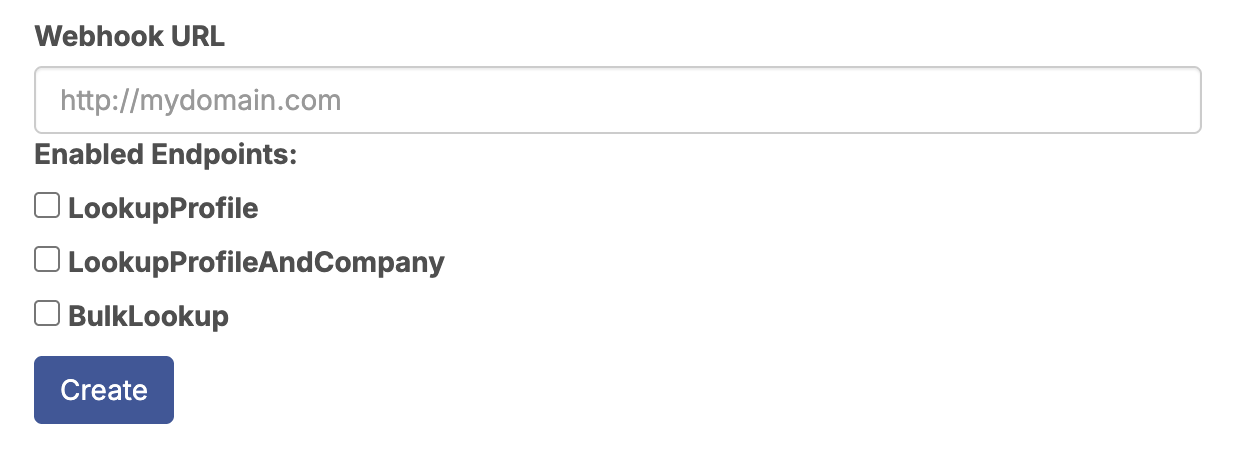Lookup results can be sent to a webhook for streamlined data flow
Getting Started
Create your webhook
Go to your RocketReach account API Usage & Settings page

Enter your webhook's URL and check the endpoints you wish to enable, then click Create.

Make sure the webhook is enabled and click Test Webhook to verify connection
Send a lookup request
Create either a People Lookup or Bulk People Lookup request and include your desired webhook's ID in the request parameters. If no webhook ID is provided in the request, the value will default to your top-most enabled webhook.
Request Query Examples
People Lookup API
{
"id": 123456,
"webhook_id": 1004,
}Bulk People Lookup API
{
"queries": [
{"id": 123456}, ...
],
"webhook_id": 1004,
}Get response data
Response data sent to webhooks will always have the following format (or a list of these objects for bulk requests)
{
"profile_list": {
"id": 1000,
"name": "Example Profile List"
},
"id": 123456,
...
}With headers
{
"RR-Request-ID": "85c36d54-8c43-4a97-8a7d-782d8a0f938f",
...
}Use this RR-Request-ID to correlate your requests with responses received by the webhook
Authentication
Generate a webhook secret
Go to your RocketReach account API Usage & Settings page and find/create your webhook
Click Generate Secret or Regenerate Secret and await confirmation of a successful generation
Store the secret value for future use in authentication
Verify your webhook data
Your response data will now contain the following header
{
"X-RocketReach-Signature": "h50yogIFeOJuOvaxOoJhtJ2WHOzqdKFsGG7p4f3lkwI=",
...
}Using your secret and the raw response body you can compute an expected secret value using the following code example
import hashlib
import hmac
import base64
def verify_signature(secret, body, received_signature) -> bool:
# secret: the secret associated with your webhook ID
# body: the raw response body (bytes) recieved from RocketReach
# received_signature: 'X-RocketReach-Signature' from the recieved headers
# Compute HMAC-SHA256 of the body
computed_hmac = hmac.new(
secret.encode("utf-8"),
body,
hashlib.sha256
).digest()
# Base64 encode the result
computed_signature = base64.b64encode(computed_hmac).decode("utf-8")
# Use constant-time comparison to avoid timing attacks
return hmac.compare_digest(computed_signature, received_signature)A True response indicates the response was properly authenticated
